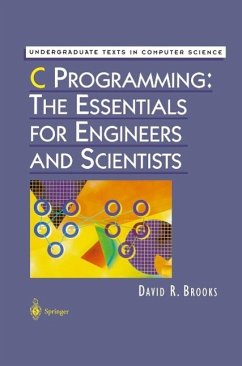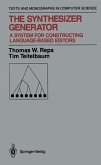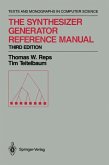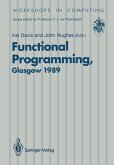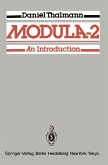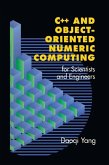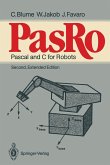David R. Brooks
C Programming: The Essentials for Engineers and Scientists (eBook, PDF)
52,95 €
52,95 €
inkl. MwSt.
Sofort per Download lieferbar

26 °P sammeln
52,95 €
Als Download kaufen

52,95 €
inkl. MwSt.
Sofort per Download lieferbar

26 °P sammeln
Jetzt verschenken
Alle Infos zum eBook verschenken
52,95 €
inkl. MwSt.
Sofort per Download lieferbar
Alle Infos zum eBook verschenken

26 °P sammeln
David R. Brooks
C Programming: The Essentials for Engineers and Scientists (eBook, PDF)
- Format: PDF
- Merkliste
- Auf die Merkliste
- Bewerten Bewerten
- Teilen
- Produkt teilen
- Produkterinnerung
- Produkterinnerung

Bitte loggen Sie sich zunächst in Ihr Kundenkonto ein oder registrieren Sie sich bei
bücher.de, um das eBook-Abo tolino select nutzen zu können.
Hier können Sie sich einloggen
Hier können Sie sich einloggen
Sie sind bereits eingeloggt. Klicken Sie auf 2. tolino select Abo, um fortzufahren.

Bitte loggen Sie sich zunächst in Ihr Kundenkonto ein oder registrieren Sie sich bei bücher.de, um das eBook-Abo tolino select nutzen zu können.
This is an introductory book on computer programming for scientists and engineers based on the C language. It is a learn-by-doing book teaching the reader to write small stand-alone programs in C to solve typical scientific / engineering problems. As such it differs markedly from a C book for CS majors. It has many examples and exercises and is for computer literate but non-programming undergraduates.
- Geräte: PC
- ohne Kopierschutz
- eBook Hilfe
- Größe: 66.52MB
Andere Kunden interessierten sich auch für
![The Denotational Description of Programming Languages (eBook, PDF) The Denotational Description of Programming Languages (eBook, PDF)]() M. J. C. GordonThe Denotational Description of Programming Languages (eBook, PDF)40,95 €
M. J. C. GordonThe Denotational Description of Programming Languages (eBook, PDF)40,95 €![The Synthesizer Generator (eBook, PDF) The Synthesizer Generator (eBook, PDF)]() Thomas W. RepsThe Synthesizer Generator (eBook, PDF)40,95 €
Thomas W. RepsThe Synthesizer Generator (eBook, PDF)40,95 €![The Synthesizer Generator Reference Manual (eBook, PDF) The Synthesizer Generator Reference Manual (eBook, PDF)]() Thomas W. RepsThe Synthesizer Generator Reference Manual (eBook, PDF)72,95 €
Thomas W. RepsThe Synthesizer Generator Reference Manual (eBook, PDF)72,95 €![Functional Programming (eBook, PDF) Functional Programming (eBook, PDF)]() Functional Programming (eBook, PDF)40,95 €
Functional Programming (eBook, PDF)40,95 €![Modula-2 (eBook, PDF) Modula-2 (eBook, PDF)]() Daniel ThalmannModula-2 (eBook, PDF)72,95 €
Daniel ThalmannModula-2 (eBook, PDF)72,95 €![C++ and Object-Oriented Numeric Computing for Scientists and Engineers (eBook, PDF) C++ and Object-Oriented Numeric Computing for Scientists and Engineers (eBook, PDF)]() Daoqi YangC++ and Object-Oriented Numeric Computing for Scientists and Engineers (eBook, PDF)52,95 €
Daoqi YangC++ and Object-Oriented Numeric Computing for Scientists and Engineers (eBook, PDF)52,95 €![PasRo (eBook, PDF) PasRo (eBook, PDF)]() Christian BlumePasRo (eBook, PDF)72,95 €
Christian BlumePasRo (eBook, PDF)72,95 €-
-
-
This is an introductory book on computer programming for scientists and engineers based on the C language. It is a learn-by-doing book teaching the reader to write small stand-alone programs in C to solve typical scientific / engineering problems. As such it differs markedly from a C book for CS majors. It has many examples and exercises and is for computer literate but non-programming undergraduates.
Dieser Download kann aus rechtlichen Gründen nur mit Rechnungsadresse in A, B, BG, CY, CZ, D, DK, EW, E, FIN, F, GR, HR, H, IRL, I, LT, L, LR, M, NL, PL, P, R, S, SLO, SK ausgeliefert werden.
Produktdetails
- Produktdetails
- Verlag: Springer US
- Seitenzahl: 479
- Erscheinungstermin: 6. Dezember 2012
- Englisch
- ISBN-13: 9781461214847
- Artikelnr.: 44175884
- Verlag: Springer US
- Seitenzahl: 479
- Erscheinungstermin: 6. Dezember 2012
- Englisch
- ISBN-13: 9781461214847
- Artikelnr.: 44175884
- Herstellerkennzeichnung Die Herstellerinformationen sind derzeit nicht verfügbar.
1 Programming Preliminaries.- 1.1 A Five-Step Problem-Solving Process.- 1.2 Defining a Pseudocode Language for Algorithm Development.- 1.3 Organizing Pseudocode Into a Program.- 1.4 Examples.- 1.5 What Is the Point of Programming?.- 1.6 Your First C Program.- 2 The Basics of C Programming.- 2.1 C Program Layout.- 2.2 Basic Input and Output.- 2.3 Reading External Text Files of Unknown Length.- 2.4 Reading a File One Character at a Time.- 2.5 Applications.- 2.6 Debugging Your Programs.- 3 Data Types, Operators, and Functions.- 3.1 Specifying and Using Data Types.- 3.2 Operators.- 3.3 Type Casting.- 3.4 Intrinsic Functions.- 3.5 Simple User-Defined Functions.- 3.6 Applications.- 3.7 Debugging Your Programs.- 3.8 Exercises.- 4 Selection and Repetition Constructs.- 4.1 Relational and Logical Operators.- 4.2 Selection (IF...THEN...ELSE...) Constructs.- 4.3 Choosing Alternatives From a List of Possibilities.- 4.4 Repetition (LOOP...) Constructs.- 4.5 Applications.- 4.6 Debugging Your Programs.- 4.7 Exercises.- 5 More About Modular Programming.- 5.1 Defining Information Interfaces in C.- 5.2 Menu-Driven Programs.- 5.3 More About Function Interfaces.- 5.4 Recursive Functions.- 5.5 Using Prewritten Code Modules.- 5.6 Using Functions as Arguments and Parameters.- 5.7 Passing Arguments to the main Function.- 5.8 Applications.- 5.9 Debugging Your Programs.- 5.10 Exercises.- 6 Arrays.- 6.1 Arrays in Structured Programming.- 6.2 One-Dimensional Array Implementation in C.- 6.3 Using Arrays in Function Calls.- 6.4 Multidimensional Arrays.- 6.5 Accessing Arrays With Pointers.- 6.6 More About Strings.- 6.8 Debugging Your Programs.- 6.9 Exercises.- 7 User-Defined Data Objects.- 7.1 Creating User-Defined Data Objects.- 7.2 Arrays of Structures.- 7.3 Functions With Structures as Parametersand Data Types.- 7.4 Applications.- 7.5 Debugging Your Programs.- 7.6 Exercises.- 8 Searching and Sorting Algorithms.- 8.1 Introduction.- 8.2 Searching Algorithms.- 8.3 Sorting Algorithms.- 8.5 Application: Merging Sorted Lists.- 8.6 Debugging Your Programs.- 8.7 Exercises.- 9 Basic Statistics and Numerical Analysis.- 9.1 Introduction.- 9.2 Basic Descriptive Statistics.- 9.3 Numerical Differentiation.- 9.4 Numerical Integration.- 9.5 Solving Systems of Linear Equations.- 9.6 Finding the Roots of Equations.- 9.7 Numerical Solutions to Differential Equations.- 9.8 Exercises.- 10 Binary Files, Random Access, and Dynamic Allocation.- 10.1 Binary and Random Access Files.- 10.2 Dynamic Allocation and Linked Lists.- 10.3 Queues and Stacks.- 10.4 Application: Managing Data From Remote Instruments.- 10.5 Exercises.- Appendices.- Appendix 1: Table of ASCII Characters for Windows/DOS-Based PCs.- Appendix 2: Program Listings by Chapter.- Appendix 3: Glossary.
1 Programming Preliminaries.- 1.1 A Five-Step Problem-Solving Process.- 1.2 Defining a Pseudocode Language for Algorithm Development.- 1.3 Organizing Pseudocode Into a Program.- 1.4 Examples.- 1.5 What Is the Point of Programming?.- 1.6 Your First C Program.- 2 The Basics of C Programming.- 2.1 C Program Layout.- 2.2 Basic Input and Output.- 2.3 Reading External Text Files of Unknown Length.- 2.4 Reading a File One Character at a Time.- 2.5 Applications.- 2.6 Debugging Your Programs.- 3 Data Types, Operators, and Functions.- 3.1 Specifying and Using Data Types.- 3.2 Operators.- 3.3 Type Casting.- 3.4 Intrinsic Functions.- 3.5 Simple User-Defined Functions.- 3.6 Applications.- 3.7 Debugging Your Programs.- 3.8 Exercises.- 4 Selection and Repetition Constructs.- 4.1 Relational and Logical Operators.- 4.2 Selection (IF...THEN...ELSE...) Constructs.- 4.3 Choosing Alternatives From a List of Possibilities.- 4.4 Repetition (LOOP...) Constructs.- 4.5 Applications.- 4.6 Debugging Your Programs.- 4.7 Exercises.- 5 More About Modular Programming.- 5.1 Defining Information Interfaces in C.- 5.2 Menu-Driven Programs.- 5.3 More About Function Interfaces.- 5.4 Recursive Functions.- 5.5 Using Prewritten Code Modules.- 5.6 Using Functions as Arguments and Parameters.- 5.7 Passing Arguments to the main Function.- 5.8 Applications.- 5.9 Debugging Your Programs.- 5.10 Exercises.- 6 Arrays.- 6.1 Arrays in Structured Programming.- 6.2 One-Dimensional Array Implementation in C.- 6.3 Using Arrays in Function Calls.- 6.4 Multidimensional Arrays.- 6.5 Accessing Arrays With Pointers.- 6.6 More About Strings.- 6.8 Debugging Your Programs.- 6.9 Exercises.- 7 User-Defined Data Objects.- 7.1 Creating User-Defined Data Objects.- 7.2 Arrays of Structures.- 7.3 Functions With Structures as Parametersand Data Types.- 7.4 Applications.- 7.5 Debugging Your Programs.- 7.6 Exercises.- 8 Searching and Sorting Algorithms.- 8.1 Introduction.- 8.2 Searching Algorithms.- 8.3 Sorting Algorithms.- 8.5 Application: Merging Sorted Lists.- 8.6 Debugging Your Programs.- 8.7 Exercises.- 9 Basic Statistics and Numerical Analysis.- 9.1 Introduction.- 9.2 Basic Descriptive Statistics.- 9.3 Numerical Differentiation.- 9.4 Numerical Integration.- 9.5 Solving Systems of Linear Equations.- 9.6 Finding the Roots of Equations.- 9.7 Numerical Solutions to Differential Equations.- 9.8 Exercises.- 10 Binary Files, Random Access, and Dynamic Allocation.- 10.1 Binary and Random Access Files.- 10.2 Dynamic Allocation and Linked Lists.- 10.3 Queues and Stacks.- 10.4 Application: Managing Data From Remote Instruments.- 10.5 Exercises.- Appendices.- Appendix 1: Table of ASCII Characters for Windows/DOS-Based PCs.- Appendix 2: Program Listings by Chapter.- Appendix 3: Glossary.
